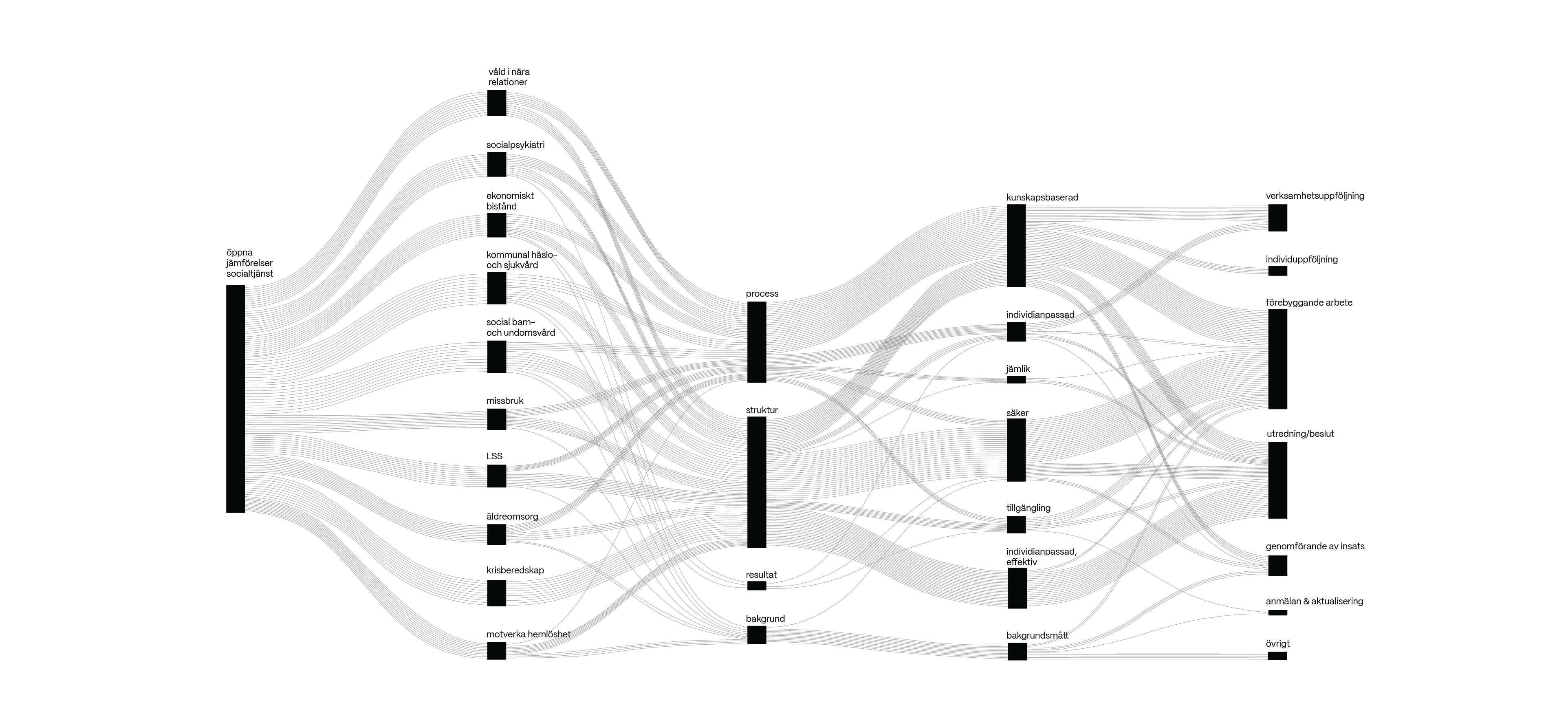
- Client
- Socialstyrelsen
- Project
- Open comparisons
Open comparisons are a collection of indicators that are collected at the municipal level throughout Sweden. The indicators measure quality in social services and healthcare. In 2021, the National Audit Office submitted a report to the Swedish parliament: ’Open comparisons in social services - limited contribution to good quality’. The National Audit
Office recommended that a critical review of existing indicators be carried out. The basic premise was that only indicators of clear benefit to the municipalities, the state’s management of knowledge or national follow-ups should be included. The National Audit Office’s report was the start of extensive work with improvement of open comparisons. As part of this work, Point ran a project to examine the usefulness of open comparisons for the municipalities. The purpose was to develop a framework for the evaluation of indicators and to give suggestions for indicators that can be discontinued.